Around mid-March, I decided to move on from Machine Lateral Raises to find an alternative exercise to do for a month or two before switching back. My last day of Machine Lateral Raises before switching was on March 17, 2025: 135lbs x 10 reps; 180lb or 1 rep max. The session beforehand that used the same weights on March 17, 2025, was 9 reps instead of 10 reps, making it a 173.1-pound 1 rep max.
First Side Delt Day: LU Raises
The first exercise I tried was the LU Raise performing at 30 pounds by 6 reps (34.9 1 rep max) using both dumbbells simultaneously. For whatever reason I decided to try it again at the end of the session after my short cooldown, but instead did them one dumbbell at a time. I was able to add 2 reps making it a 37 pound 1 rep max. So the range between them are [34.9 lbs – 37 lbs]. Shortly after, I moved on to Leaning Lateral Raises (mixing isometrics and regular reps) using the preacher curl apparatus. I chose not to do cable lateral raises because going heavy on it hurts my elbow. As for machine lateral raises, going full reps hurts my left side clavicle. The estimated ratio between the machine lateral raises and the LU Raises is 5 (180 / 36). The 36 value was between the previously mentioned range from 2 days of LU Raises. Both exercises have the elbow reaching at least shoulder level.
LU Raises * 5 = Machine Lateral Raises
Pics
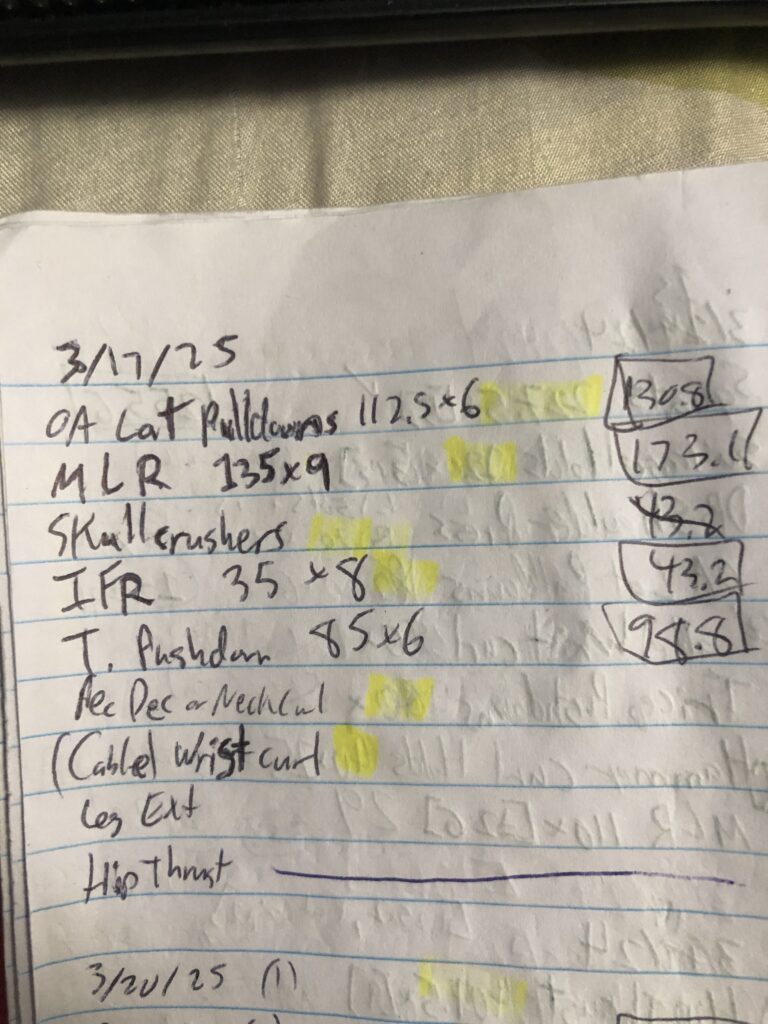
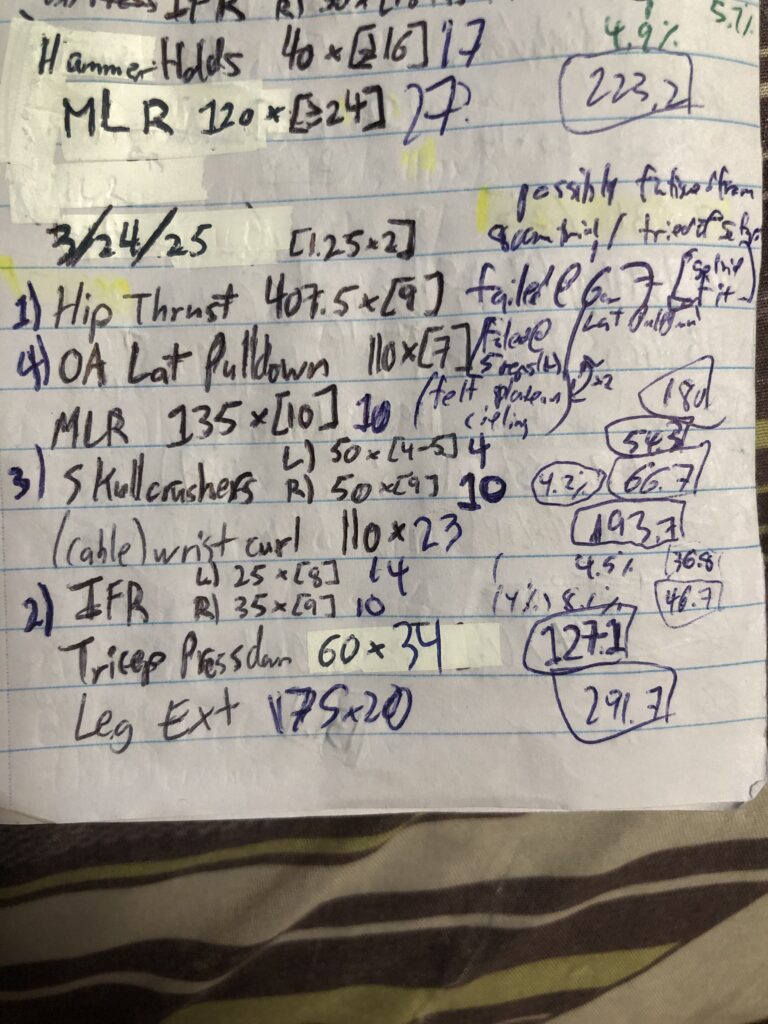
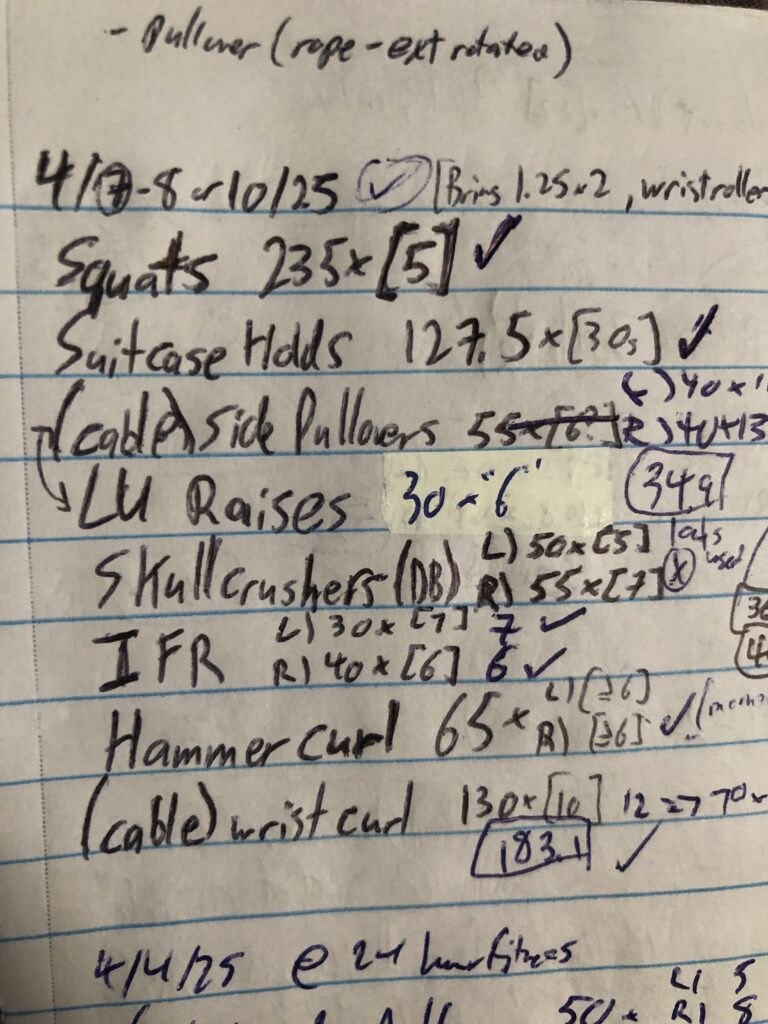
Preacher Style Leaning Dumbbell Lateral Raises
At first I did just isometric holds, but eventually, I just wanted to do regular reps like I did with Incline Front Raises; first day was 31 as my 1 rep max. I leaned against the Preacher curl pad so that the hardest part of the exercise was when there was some lengthening of the muscle, as opposed to the regular lateral raises where the hardest part is when the muscle is mostly contracted. After spending some time with the Preacher Style Leaning Dumbbell Lateral Raises, I was shopping for my next Side Delt isolation exercise. At first, I was going to try the powell Raises, but eventually I came across the concept of Partial Lateral Raises and was excited to try it. Note: If you press the clavicle down or depress the shoulder blades, you’re not going to be able to raise the elbows all the way to the shoulder (90 degrees on armpit), indicating the upper traps are going to have involvement in full range lateral raises in some capacity. The last day of the Preacher Style Lateral Raises was on 4/28/2025, performed at 20 pounds for 25 reps on the weakest side; 36 pounds. As for the Partial Machine Lateral Raises, I ended up doing 110 pounds for 19 reps; 180.3 on my first day trying it (5/12/25). I was initially disappointed by the lack of progress, but this makes sense to me in 2 ways. First being that there was a motor skill acclimation period when doing the preacher lateral raises. The second reason was that when I performed Machine Lateral Raises this time around, I didn’t use my traps to initiate the full range movement because I only intended to do the first 30-50% of the movement and I made sure to hold at the end of each rep for about 1 second. The other adjustments were to slightly internally rotate my shoulder to where the hands and halfway between the handle and my belly button and keep my elbows at my ribcage. Ironically this was the one adjustment where my rotator cuff finally felt better, and it isolates my side delts better. Both were performed at high reps, so making this upcoming conversion is valid. 180.3 / 36 = 5.
Preacher Style Leaning Lateral Raises * 5 = Partial Machine Lateral Raise
Pics
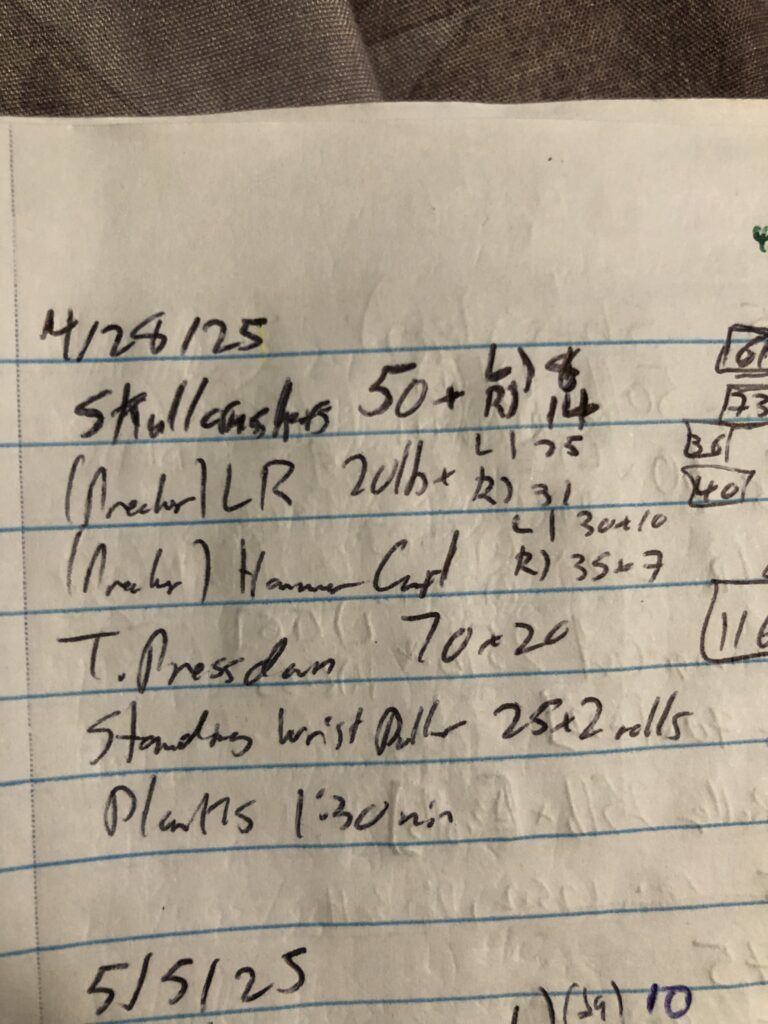
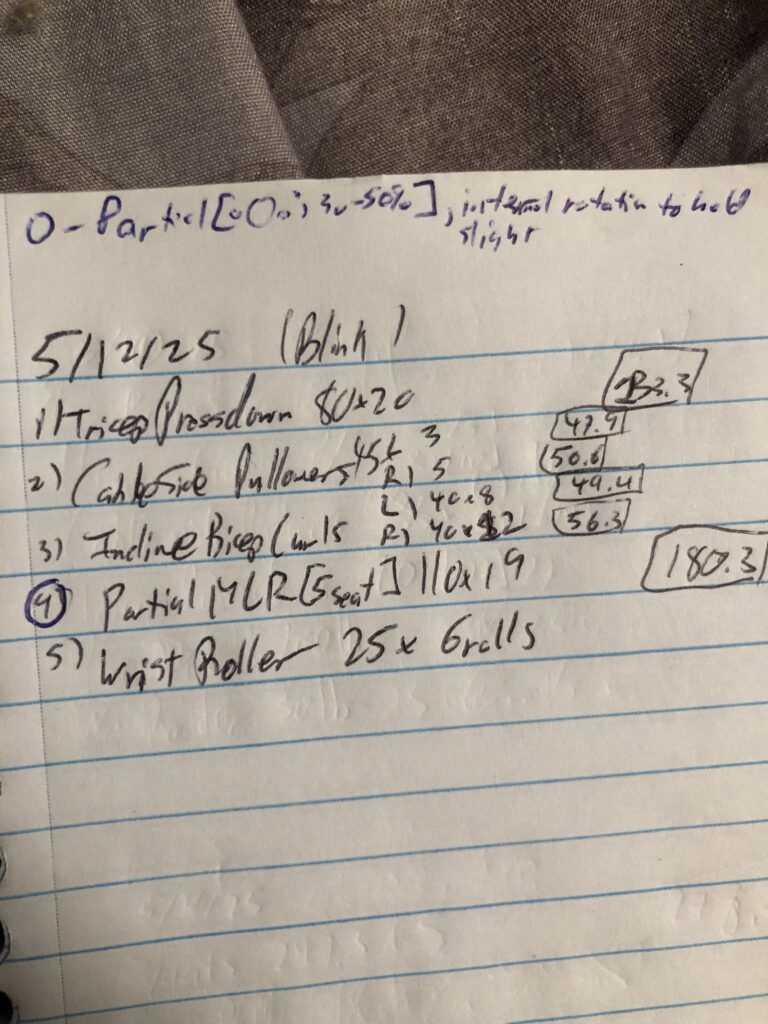
Biomechanical Reasoning
The reason that lateral raises are harder than dumbbell shoulder presses given the same weight is because the moment arm (distance between the shoulder joint and the site where the external force is being applied) is larger than the shoulder press. Not only does the dumbbell shoulder press have the triceps and front delts to assist in the lift, but the dumbbell is typically within 50% of the moment arm of the lateral raise. This is typically why bending the elbow helps in making the lateral raise exercise easier. As for the machine lateral raise, the force that’s being applied to the arm is not directly on the elbow (50%). Instead it’s more like 40% or 80% of the distance from the elbow to the shoulder.
Tangent about Pulley systems influencing force
The lateral raise machine used is a single pulley to the stack of weights, which then attaches to a circular pulley part that connects between the two arms of the lateral raise machine apparatus. This is the same pulley system that’s in the pec dec machine. If both arms are used simultaneously, only the single pulley aspect is applied due to it lifting the circular pulley part meaning that which ever weight is labelled is what is calculated, one example being the lat pulldown machine. However, if you decide to use only one side, then the single pulley (from weight stack to circular part) and the circular attachment come into play, ultimately becoming a double pulley-based exercise. A double pulley halves the force needed to move the weighted stack. This is why I was still able to train on my right side including my right chest via Pec Decs setting new PRs with a very unbalanced chest. This pulley system is very convenient in a sense that it can be used to even out body parts without changing the weights or simply train one side while nursing an injury on the other side and possible help mitigate muscle loss via The Cross-Training or Cross-Education effect. This phenomenon basically implies that training one limb positively affects the other untrained. There are two random but solid blogs that can discuss this in further detail: blog 1 and blog 2.
Back to Biomechanical Reasoning regarding why the Ratio is 5.
Because it’s a single pulley system, the number you see is what you use. Next step would simply be half the value of the stack and use that for each arm. (In my case, it would be 180 / 2 = 90). The pad that’s placed on the arm during machine lateral raises is about (4/5) the distance between the elbow and the shoulder. The elbow is at the midpoint (50%) between the shoulder and the arms. So then we apply 80% (pad to shoulder) to 50% (midpoint) which is 40% or .4. In this case, it’s 90 * .4 = 36. The closer the pad is to the elbow, the harder the exercise will be.
Wrapping up
Now that we have a usable equation to use in the meantime. I can now estimate what it will take to be able to lateral raise 50 pounds; the MLR goal would be 250lbs. The unfortunate reality is that there’s a hard ceiling in which you can rely on the lateral raise machine to make progress, as the maximum stack at my gym is 145 pounds. On the bright side, going for reps can still yield hypertrophy. Performing 145 pounds for 31 reps will have a 1 rep max estimation, assuming its high reps, is 290 pounds. 290 / 5 is 58 pounds. From that point, I would recommend either to do Preacher style leaning lateral raises or maintain it while performing heavy LU raises or compound lifts that work the side delts like upright rows or shoulder press. Once I make noticeable progress on machine lateral raises (250 pounds 1RM: 125lbs for 31 reps), then I will make an update blog post, hoping that it was enough to acquire a 50″ shoulder circumference and/or 50 pound dumbbell preacher style lateral raise.
